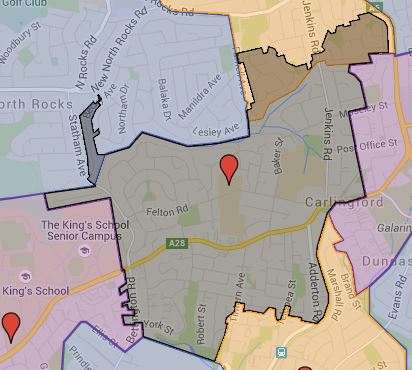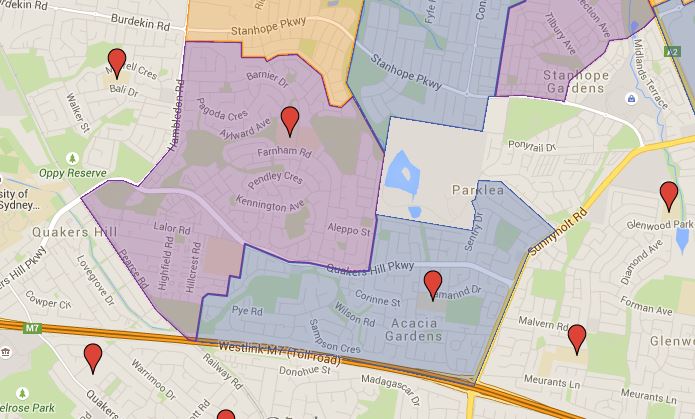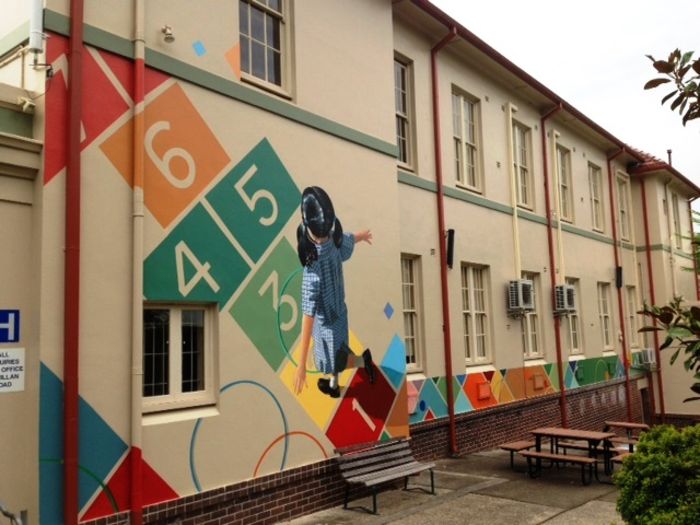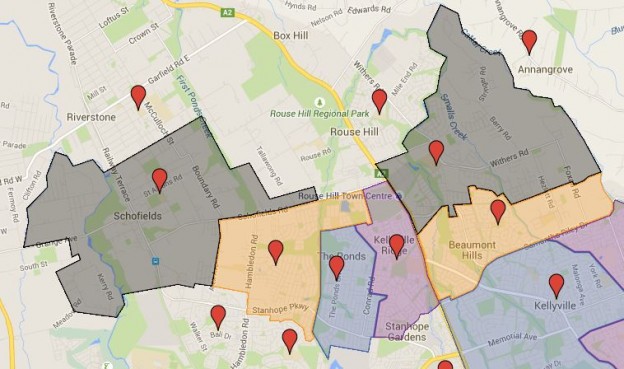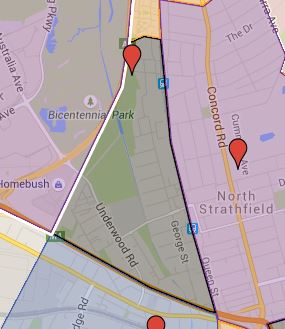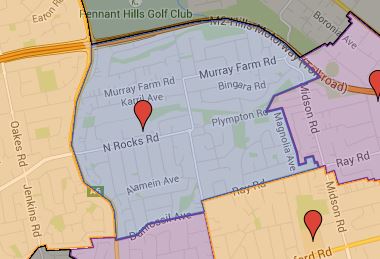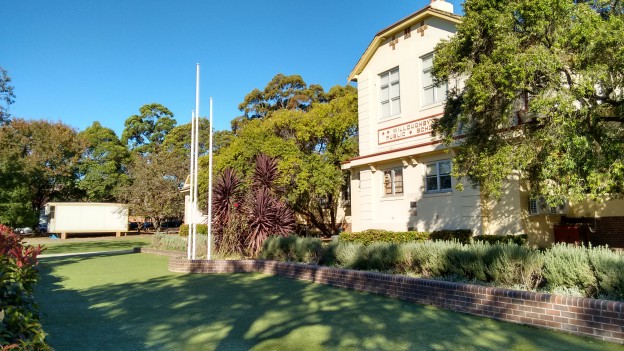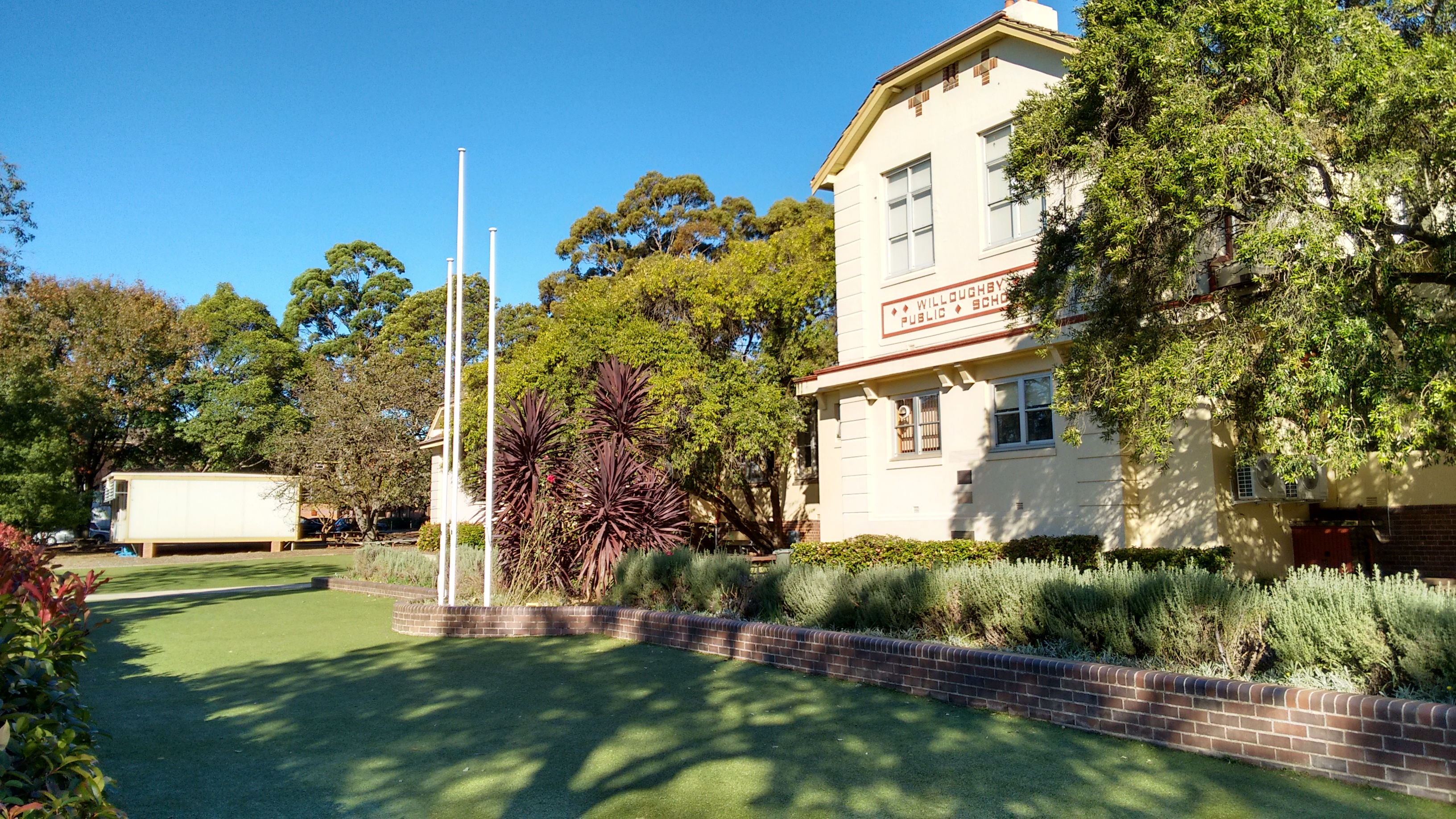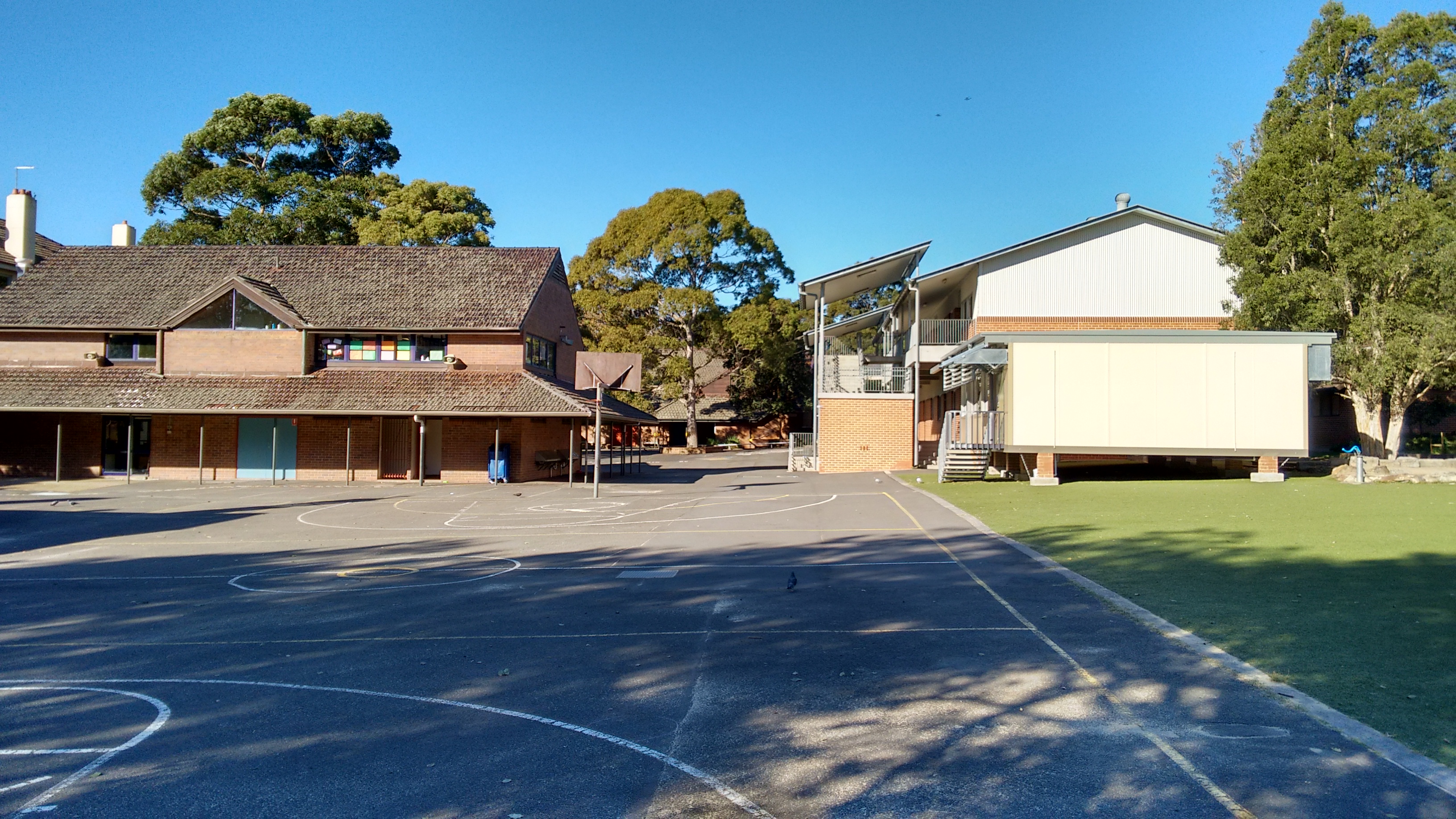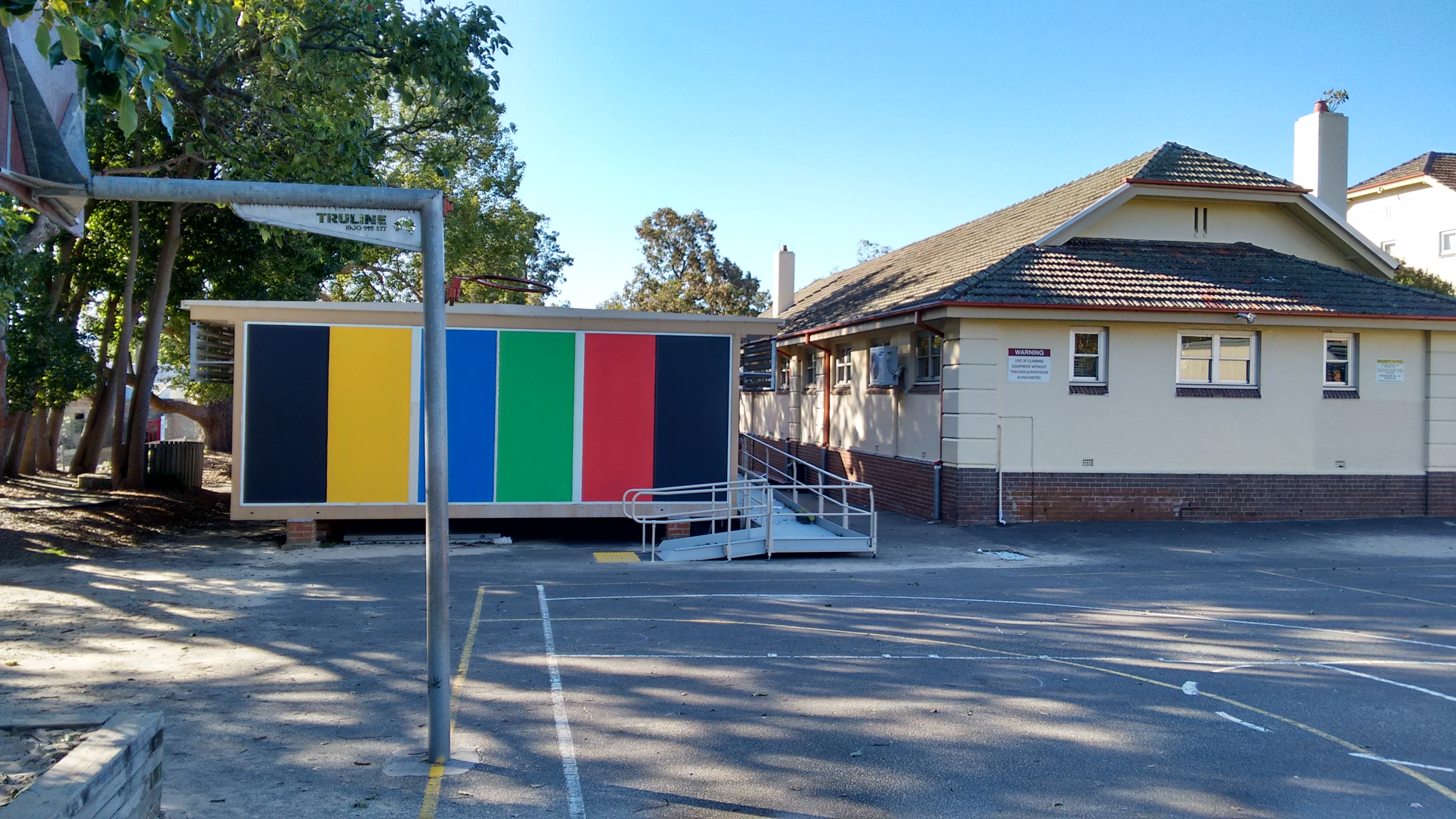| Abbotsford Public School | Dundas Public School | Matraville Public School | Stanmore Public School |
| Alexandria Park Community School | Earlwood Public School | Matthew Pearce Public School | Strathfield North Public School |
| Alfords Point Public School | East Hills Public School | Mccallums Hill Public School | Strathfield South Public School |
| Allambie Heights Public School | Eastlakes Public School | Meadowbank Public School | Summer Hill Public School |
| Annandale Public School | Eastwood height Public School | Melrose Park Public School | Sutherland Public School |
| Arncliffe Public School | Eastwood Public School | Menai Public School | Taren Point Public School |
| Artarmon Public School | Elanora Heights Public School | Metalla Road Public School | Telopea Public School |
| Ashbury Public School | Enfield Public School | Middle Harbour Public School | Tempe Public School |
| Ashfield Public School | Engadine Public School | Milperra Public School | Terry Hills Public School |
| Asquith Public School | Engadine West Public School | Mimosa Public School | The Meadows Public School |
| Athelstane Public School | Epping Heights Public School | Miranda Public School | Tharawal Public School |
| Auburn North Public School | Epping North Public School | Mona Vale Public School | Thornleigh West Public School |
| Auburn Public School | Epping Public School | Mortdale Public School | Toongabbie East Public School |
| Auburn West Public School | Epping West Public School | Mortlake Public School | Toongabbie Public School |
| Bald Face Public School | Ermington Public School | Mosman Public School | Toongabbie West Public School |
| Balgowlah Height Public School | Ermington West Public School | Mowbray Public School | Tower Street Public School |
| Balgowlah North Public School | Erskineville Public School | Murray Farm Public School | Truscott Street Public School |
| Balmain Public School | Excelsior Public School | Narrabeen Lakes Public School | Turramurra Public School |
| Bangor Public School | Ferncourt Public School | Narrabeen North Public School | Turramurra North Public School |
| BankMeadow Public School | Five Dock Public School | Narraweena Public School | Ultimo Public School |
| Banksia Road Public School | Forest Lodge Public School | Narwee Public School | Undercliffe Public School |
| Bankstown North Public School | Forestville Public School | Neutral Bay Public School | Vardys Public School |
| Bankstown Public School | Fort Street Public School | Newington Public School | Vaucluse Public School |
| Bankstown West Public School | French Forest Public School | Newtown North Public School | Victoria Avenue Public School |
| Barnier Public School | Gardeners Road Public School | Newtown Public School | Wahroonga Public School |
| Baulkham Hills North Public School | Girraween Public School | Nicholson Street Public School | Waitara Public School |
| Beacon Hill Public School | Gladesville Public School | Normanhurst Public School | Wakehurst Public School |
| Beaumont Hills Public School | Glebe Public School | Normanhurst West Public School | Warrawee Public School |
| Beaumont Road Public School | Glenmore Road Public School | North Rocks Public School | Wattawa Heights Public School |
| Beauty Point Public School | Gordon East Public School | North Ryde Public School | Waverley Public School |
| Beecroft Public School | Gordn West Public School | North Sydney Public School | Wentworthville Public School |
| Bellevue Hill Public School | Grays Point Public School | Northbridge Public School | West Pennant Hills Public School |
| Belmore North Public School | Greenacre Public School | Northmead Public School | West Pymble Public School |
| Belmore South Public School | Greenwich Public School | Oakhill Drive Public School | West Ryde Public School |
| Belrose Public School | Gymea Bay Public School | Oatlands Public School | Westmead Public School |
| Berela Public School | Gymea North Public School | Oatley Public School | Wheeler Heights Public School |
| Beverly Hills Public School | Haberfield Public School | Orange Grove Public School | Wiley Park Public School |
| Beresford Road Public School | Harbord Public School | Oyster Bay Public School | Wilkins Public School |
| Beverly Hills Public School | Hambledon Public School | Paddington Public School | Willoughby Public School |
| Bexley North Public School | Hampden Park Public School | Padstow Heights Public School | Winston Heights Public School |
| Bexley Public School | Hannans Road Public School | Padstow Park Public School | Winston Hills Public School |
| Birchgrove Public School | Harcourt Public School | Padstow South Public School | Woollahra Public School |
| Blakehurst Public School | Heathcote East Public School | Pagewood Public School | Woolooware Public School |
| Bondi Public School | Heathcote Public School | Panania North Public School | Woronora Public School |
| Bonnet Bay Public School | Hilltop Road Public School | Panania Public School | Yagoona Public School |
| Boronia Park Public School | Homebush Public School | Parklea Public School | Yarrawarra Public School |
| Botany Public School | Homebush West Public School | Parramatta East Public School | Yates Avenue Public School |
| Bourke Street Public School | Hornsby Heights Public School | Parramatta North Public School | Yowie Bay Public School |
| Brighton-Le-Sands Public School | Hornsby North Public School | Parramatta Public School | |
| Bronte Public School | Hornsby South Public School | Parramatta West Public School | |
| Brookvale Public School | Hunters Hill Public School | Peakhurst Public School | |
| Bundeena Public School | Hurstville Public School | Peakhurst South Public School | |
| Burnside Public School | Hurstville South Public School | Peakhurst West Public School | |
| Burraneer Bay Public School | Illawong Public School | Peakhurst West Public School | |
| Burwood Public School | Ironbark Ridge Public School | Pendle Hills Public School | |
| Caddies Creek Public School | Jannali Public School | Pennant Hills Public School | |
| Camdenville Public School | Jannali East Public School | Pennant Hills Public School | |
| Cammeray Public School | Japser Road Public School | Penshurst Public School | |
| Campsie Public School | John Palmer Public School | Petersham Public School | |
| Canterbury South Public School | John Purchase Public School | Picnic Point Public School | |
| Canterbury Public School | Kambora Public School | Plunkett Street Public School | |
| Caringbah Public School | Kareela Public School | Punchbowl Public School | |
| Carlingford Public School | Kegworth Public School | Putney Public School | |
| Carlingford West Public School | Kellyville Public School | Quakers Hill East Public School | |
| Carlton Public School | Kellyville Ridge Public School | Pymble Public School | |
| Carlton South Public School | Kensington Public School | Rainbow Street Public School | |
| Castle Cover Public School | Kent Road Public School | Ramsgate Public School | |
| Castle Hill Public School | Killarney Heights Public School | Randwick Public School | |
| Chatswood Public School | Kingsgrove Public School | Reversby Public School | |
| Cherrybrook Public School | Kings Langley Public School | Reversby South Public School | |
| Chifley Public School | Kirrawee Public School | Ringrose Public School | |
| Chullora Public School | Kurnell Public School | Riverbank Public School | |
| Clemton Park Public School | Kogarah Public School | Riverstone Public School | |
| Clovelly Public School | La Perouse Public School | Riverwood Public School | |
| Collaroy Plateau Public School | Lakemba Public School | Rockdale Public School | |
| Como Public School | Lalor Park Public School | Rose Bay Public School | |
| Como West Public School | Lane Cove Public School | Rosehill Public School | |
| Concord Public School | Lane Cove West Public School | Roselea Public School | |
| Concord West Public School | Leichhardt Public School | Roseville Public School | |
| Condell Park Public School | Lewisham Public School | Rouse Hill Public School | |
| Connells Point Public School | Lidcombe Public School | Rozelle Public School | |
| Coogee Public Schoool | Lilli Pilli Public School | Rydalmere East Public School | |
| Cromer Public School | Lindfield Public School | Rydalmere Public School | |
| Cronulla Public School | Lindfield East Public School | Ryde East Public School | |
| Cronulla South Public School | Loftus Public School | Ryde Public School | |
| Crestwood Public School | Lucas Height Community School | Samule Gilbert Public School | |
| Crown Street Public School | Lugarno Public School | Sans Souci Public School | |
| Croydon Park Public School | Lynwood Park Public School | Schofields Public School | |
| Croydon Public School | Malabar Public School | Seaforth Public School | |
| Curl Curl North Public School | Manly West Public School | Seven Hills North Public School | |
| Daceyville Public School | Manly Village Public School | Seven Hills Public School | |
| Darcy Road Public School | Manly Vale Public School | Seven Hills West Public School | |
| Darlinghurst Public School | Marie Bashir Public School | Sherwood Ridge Public School | |
| Darlington Public School | Maroubra Bay Public School | Solders' Settlement Public School | |
| Dee Why Public School | Maroubra Junction Public School | South Coogee Public School | |
| Denistone East Public School | Marrickville Public School | Sutherland North Public School | |
| Dobroyd Point Public School | Marrickville West Public School | St Ives North Public School | |
| Double Bay Public School | Marsden Park Public School | St Ives Park Public School | |
| Drummoyne Public School | Marton Public School | St Ives Public School | |
| Dulwich Hill Public School | Mascot Public School | St Peters Public School | |
